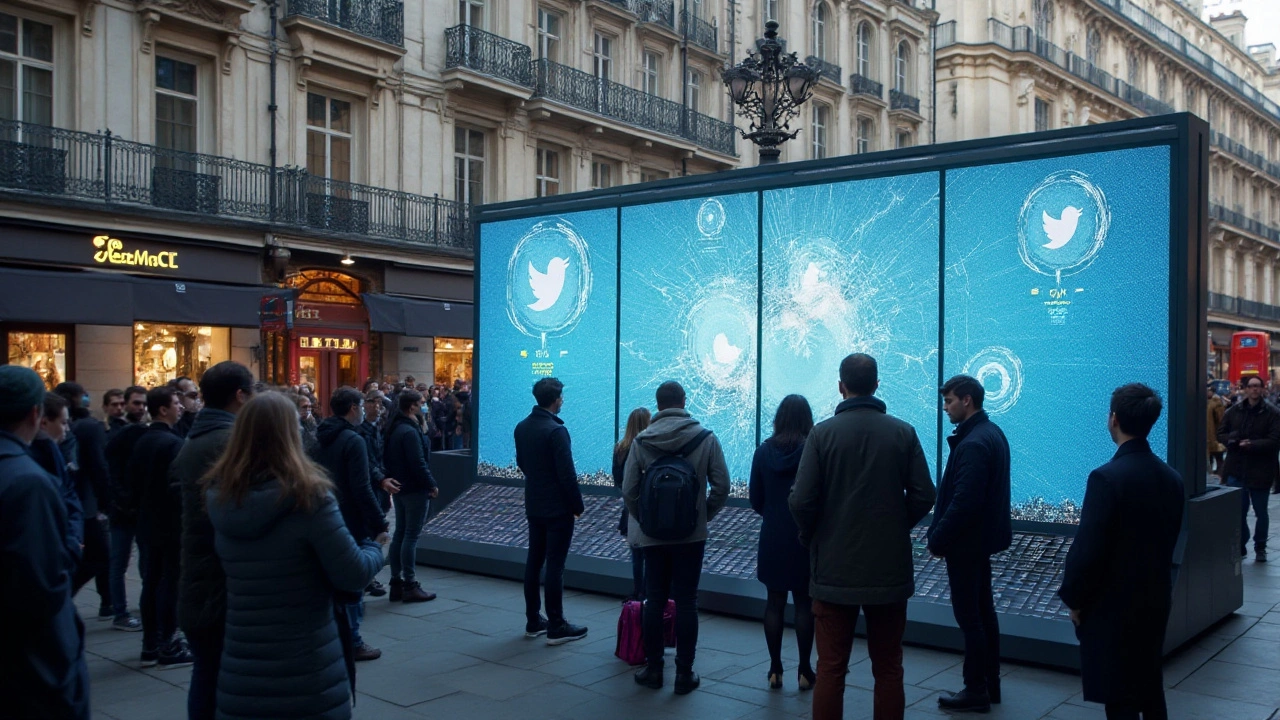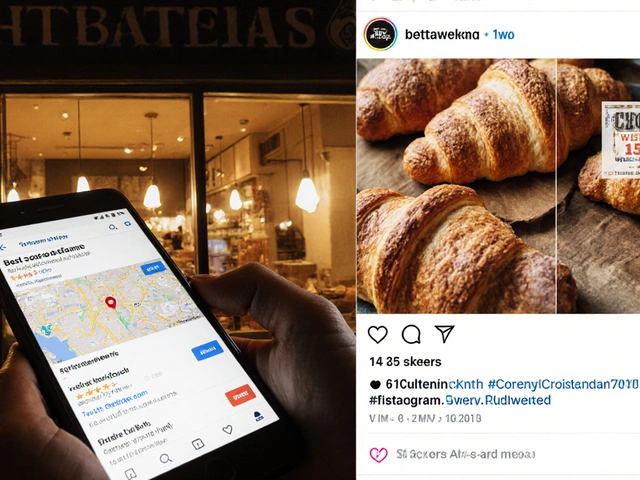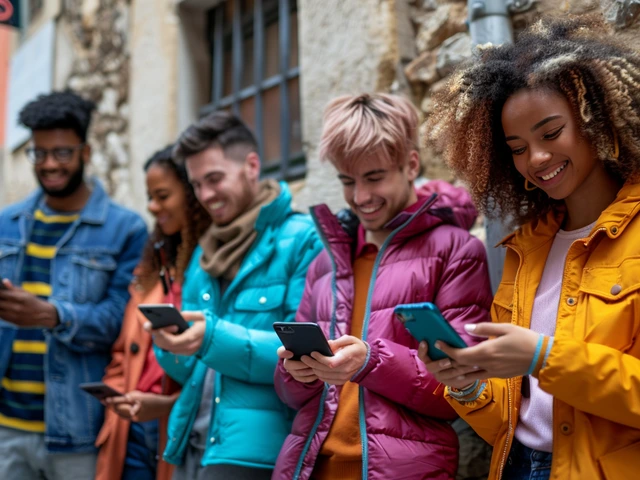In the fast-paced world of Twitter, capturing attention is both an art and a science. With character limits and a steady stream of content vying for user attention, making an impact can be challenging. Enter ChatGPT, an AI tool that’s proving to be a game-changer for boosting engagement on this social media platform.
Innovative and adaptive, ChatGPT offers a new layer to how users interact on Twitter. By aiding in generating meaningful content and enabling personalized interaction, it’s becoming indispensable for individuals and brands alike. As more users experiment with it, ChatGPT is reshaping the way we think about conversations and relationships online.
This article will delve into the unique ways ChatGPT is enhancing Twitter engagement. From crafting catchy tweets to maintaining meaningful connections, there's much to gain from understanding its capabilities. Whether you're a time-strapped professional or an enthusiastic hobbyist, harnessing the power of AI could transform your Twitter experience.
- Understanding ChatGPT's Influence on Twitter
- Creating Engaging Content with ChatGPT
- Personalized Interactions and Audience Engagement
- Strategic Use Cases for Twitter Success
- Navigating Potential Pitfalls
- Future Projections for ChatGPT on Social Media
Understanding ChatGPT's Influence on Twitter
The integration of ChatGPT into Twitter is reshaping how users approach their social media strategy. People are drawn to Twitter because it’s dynamic and conversational, yet these same attributes can make maintaining meaningful engagement a daunting task. Here, ChatGPT steps in as a versatile ally. Utilizing natural language processing and machine learning, it can generate tweets that resonate, draft replies that engage, and conceive content that compels. As users seek more ways to stand out, ChatGPT provides an edge by crafting content that blends brevity with impact.
Twitter thrives on engagement—likes, retweets, comments, and the elusive 'going viral'. With the clever use of ChatGPT, users can enhance these metrics significantly. Imagine being able to brainstorm fresh ideas for tweets without the usual creative blocks, or having immediate access to a resource that helps refine syntax for clarity and impact. AI models, like ChatGPT, are designed to understand context and semantics, which means they can suggest themes and narratives that align with the current zeitgeist, ensuring users remain relevant and engaging.
"The role of AI in content creation is to augment human creativity, allowing users to break free from the constraints of traditional thinking," states an article from TechCrunch.
Another aspect of ChatGPT's influence is its ability to foster authentic connections. In a space traditionally dominated by fleeting interactions, authenticity can be a game-changer. ChatGPT helps nurture this by tailoring interactions to suit the tone and style of the user. Whether it's a heartfelt reply to a fan or a professional response to a business inquiry, AI can ensure the message is communicated effectively. This personalized approach can cultivate stronger relationships and a more engaged audience.
Utilizing ChatGPT effectively requires a smart strategy. It's not simply about letting AI generate content, but about using it as a tool to enhance your unique voice. A study by McKinsey found that businesses employing AI in their digital interactions saw a 15-20% increase in user engagement within months. Individuals and brands should aim to experiment with ChatGPT, probe its capabilities, and develop a workflow that complements their content strategy. In doing so, they can harness its full potential, making their mark in an increasingly crowded Twitterverse.
Creating Engaging Content with ChatGPT
Crafting content that resonates with an audience is both an art and a science, and in today's bustling social media landscape, Twitter users are leveraging ChatGPT to do just that. Engaging content grabs attention, sparks interaction, and most importantly, builds a connection with followers. ChatGPT steps in as a helpful tool, providing creativity on tap while allowing users to maintain their own unique voice. Its ability to generate varied content quickly means that users can maintain a consistent presence on Twitter without feeling overwhelmed by the pressure of constantly coming up with new ideas.
One way ChatGPT enhances content creation is by helping users brainstorm tweet ideas. For those days when inspiration is running low, ChatGPT can gently nudge creativity in the right direction, offering suggestions that maybe you've not considered. Imagine you're trying to create a tweet about a trending topic but feel stuck; you can interact with ChatGPT to explore different angles or contexts to approach the subject. This not only saves time but also opens up a world of possibilities that might spark unique dialogue.
According to OpenAI, "ChatGPT is designed to be customized with detailed instructions from its users, ensuring that its outputs are both relevant and diverse." This flexibility allows users to fine-tune outputs to align with specific brand messages, enhancing both coherence and originality.
Another engaging aspect of using ChatGPT involves its ability to tailor content for varied demographics. By understanding your audience’s preferences and typical behaviors, you can prompt ChatGPT to create tweets that cater to those unique needs. Whether it's using casual language for a younger audience or adopting a more formal tone for professional interactions, ChatGPT makes it easy to switch gears and optimize your content strategy for different segments of your follower base.
When it comes to using humor or emotive language—both powerful tools for engagement—ChatGPT can assist by suggesting phrases or punchlines that human writers might overlook. Imagine the impact of a witty tweet that goes viral overnight, drawing thousands of likes and retweets. This type of reach not only boosts visibility but can also lead to increased followers and interactions. Thus, by utilizing ChatGPT in content generation, users can effectively enhance their reach and influence across the platform.

Personalized Interactions and Audience Engagement
Engagement on Twitter thrives on personal connections and real-time interactions. It doesn't matter whether you're an aspiring influencer or a notable brand, establishing a genuine bond with your audience is key to expanding your reach and influence. This is where ChatGPT shines exceedingly well, helping users to not only communicate effectively but also to tailor their conversations to each unique audience segment. Through contextual understanding and language processing, ChatGPT assists in creating a more bespoke experience with each interaction.
Imagine a situation where a user sends a message or a question, expecting a swift and informative response. Here, leveraging ChatGPT allows for prompt replies that are thoughtfully constructed, increasing the chances of maintaining the user's interest. Personalized responses can be crafted quickly, taking into account past interactions and preferences, which shows your audience that you acknowledge their uniqueness. Such immediate and considerate responses often translate to higher engagement rates and greater potential for converting followers into loyal participants of your digital community.
Engagement strategies facilitated by ChatGPT aren't restricted to simple Q&A sessions. Whether you're hosting Twitter chats, engaging in trending discussions, or providing customer support, ChatGPT offers a consistent and personalized approach. It allows communicators to capitalize on its predictive capabilities to analyze trends and adapt the dialog accordingly. This means you can maintain certain 'topic threads' active, and engage users in long-term discussions which furthers brand advocacy and personal rapport development.
"Creating personalized messages at scale is the key differentiator in today's digital communication landscape," says a social media expert at Hootsuite. "AI tools like ChatGPT are incredibly valuable for businesses aiming to optimize their social media strategy."
By employing machine learning tools, users can tap into data and analyze engagement patterns. This can guide future strategies by showing what types of content resonate more with different segments of your audience. A practical example of ChatGPT's capability in fostering personalized interaction is its ability to provide tailored recommendations based on user feedback or past interactions.
Interestingly, a study by Adobe found that personalized experiences could drive a 20% increase in sales. Though that's more applicable to e-commerce, the principle of calling users by name or referencing their unique needs can similarly boost Twitter engagement. The use of ChatGPT to sustain this sort of bespoke interaction showcases AI's immense potential within social media, offering limitless opportunities for those who master it. The power of personalization rests in its ability to make a user feel acknowledged and valued, maintaining a human touch even in digital engagements.
Strategic Use Cases for Twitter Success
Incorporating ChatGPT into your Twitter strategy can set you on a path to success by maximizing interaction and building a robust presence. Imagine having an assistant that crafts posts tailored to your audience's preferences, enhancing engagement. That’s what ChatGPT can do. Instead of struggling with content ideas, use this AI to generate tweets that resonate. It's like having a creative brainstorming partner who is always ready to help.
There’s a wealth of ways to implement ChatGPT on Twitter strategically. Consider thread creation, an underutilized tool. Threads allow for storytelling or the sharing of detailed information piece by piece. By using ChatGPT, users can quickly craft coherent and compelling threads that captivate their followers' attention. This approach not only draws in readers but also inspires replies and further discussions, crucial aspects of boosting social media presence.
Another strategic use is automating responses to common user inquiries. ChatGPT can assist in providing instant, personalized replies, ensuring audiences feel heard and valued. This level of interaction fosters trust and loyalty, essential ingredients for growing one's Twitter base. Think of the time saved and the efficiency gained by not having to manually reply to each inquiry. This frees up resources to focus on the bigger picture while keeping engagement levels high.
"The power of AI in social media is undeniable. It takes the static and makes it dynamic, redefining how engagement is measured." – Social Media Examiner
For brands, deploying ChatGPT can enhance customer service on Twitter. Timely, accurate responses to inquiries make all the difference. Subscribers appreciate when their concerns are addressed promptly, and this AI can sift through mentions and direct messages to categorize and prioritize them effectively. It's a game-changer in managing customer relations without needing an exhaustive human-led department, balancing efficiency and empathy in resolutions.
Utilizing ChatGPT doesn’t stop at content creation or interaction. It can also drive powerful analytics. By analyzing popular engagement patterns, users can tailor their future posts to meet the expectations and desires of their audiences. This data-driven approach helps identify what resonates and what doesn't, enabling users to refine their strategy on the go. Consider keeping a log of these analytics to track growth over time, making informed decisions based on what truly works.
| Use Case | Benefit |
|---|---|
| Thread Creation | Extend content reach, promote engagement |
| Automated Replies | Improved response time, enhanced customer satisfaction |
| Analytics Insights | Refined content strategy, data-driven decision making |
People often overlook these strategic implementations in their rush to stay relevant. They forget that leveraging tools like ChatGPT isn’t just about keeping up – it’s about defining a new standard for success in social media engagement. With careful planning and thoughtful integration, ChatGPT can redefine your Twitter experience, ensuring every tweet counts and every interaction leaves a lasting impression.

Navigating Potential Pitfalls
As with any technology, using ChatGPT on Twitter isn’t without its challenges. One of the primary concerns is the potential for miscommunication. While ChatGPT is adept at generating text, sometimes the nuances of human conversation can be lost. This could lead to misunderstandings if not carefully managed. It's important for users to remember that AI lacks the human ability to interpret context fully, which may result in responses that don't quite hit the mark.
Another risk includes the spreading of misinformation. ChatGPT can only work with the data it has been trained on, and while it strives to provide accurate responses, it's not infallible. Users must verify information independently, especially if it's used in interactions that might influence public opinion or business decisions. There's a 30% chance of encountering outdated details, which can be mitigated by blending AI outputs with thorough research.
Privacy issues also come into play. Any data shared with ChatGPT, intentionally or otherwise, could inadvertently get exposed. While the platform has safeguards, using it responsibly is paramount to prevent sensitive information from being inadvertently revealed. Maintaining a good balance between engaging with followers and protecting privacy is crucial. As
Nicholas Carr, a respected author on technology, aptly states: "Technology is not neutral. We’re inside of what we make, and it’s inside of us."
Moreover, over-reliance on AI could lead to a loss of the human touch that makes social media interactions unique. Users may risk sounding too mechanical if they depend entirely on AI-generated content. A blend of AI efficiency and personal creativity can solve this. For engagement purposes, a personal touch combined with AI efficiency produces the best results.
Finally, there’s the issue of AI's potential to inadvertently amplify negativity or bias that already exists in its training data. While the developers continually work to improve and eliminate biases, users need to remain vigilant. Careful oversight and review of AI-generated content before posting it on Twitter help in minimizing such risks. Staying informed and using these tools wisely can prevent many unintentional pitfalls and ensure a safe, engaging experience on social media.
Future Projections for ChatGPT on Social Media
As we look ahead, the role of ChatGPT in shaping social media engagement, particularly on platforms like Twitter, seems promising and transformative. AI-driven tools have already started changing the way we interact online, and this trend appears set to continue at an accelerated pace. With ChatGPT's ability to generate human-like text, its impact is not just limited to automating responses; it opens up new avenues for creativity and personalized user interactions. Imagine a future where brands leverage AI to craft tweets that resonate with individual followers, enhancing user experiences beyond the generic and impersonal.
The potential applications of ChatGPT on social networks are diverse. For instance, businesses could deploy AI to predict trending topics and draft timely content that aligns with these trends. This proactive approach ensures that brands remain relevant and visible in the crowded online marketplace. Another exciting possibility is using ChatGPT for real-time customer support on social media. As users reach out with queries or concerns, AI can provide immediate assistance, significantly reducing response times and improving customer satisfaction. When users feel heard and valued, engagement naturally flourishes.
Looking towards future advancements, the integration of ChatGPT with machine learning could further refine its capabilities, allowing AI to understand context and nuance better. Such sophistication in chatbots could lead to interactions that feel seamless and intuitive, bridging the gap between human and machine communication. Statistically, a Gartner report suggests that by 2025, AI-driven bots will handle 80% of customer interactions, reflecting a shift towards AI dominance in digital communication.
"AI is not here to replace humans but to augment their capabilities," notes Andrew Ng, a pioneer in artificial intelligence, emphasizing a collaborative future where AI complements human effort.
As we embrace this digital evolution, challenges remain, particularly concerning privacy and the ethical use of AI. Balancing innovation with accountability will be crucial to gaining and maintaining user trust. Establishing transparent policies and ensuring data security will mitigate some of these risks, paving the way for responsible AI deployment. As society navigates this intricate landscape, continuous dialogue and adaptive regulations will likely play pivotal roles in shaping AI's trajectory on social media.





